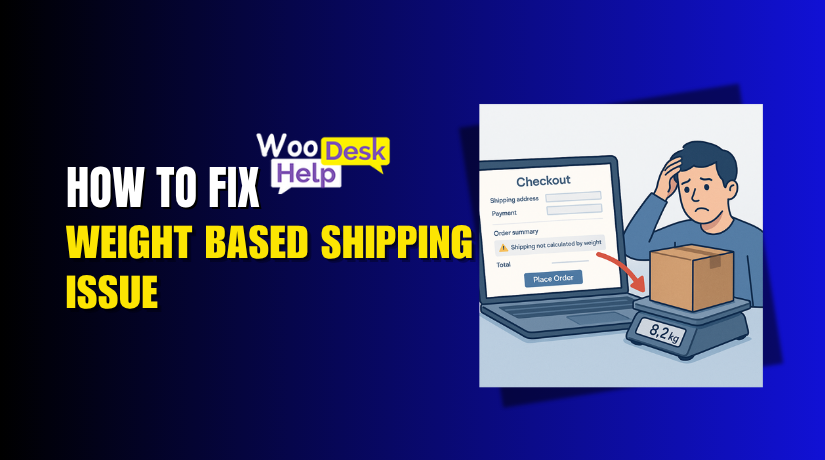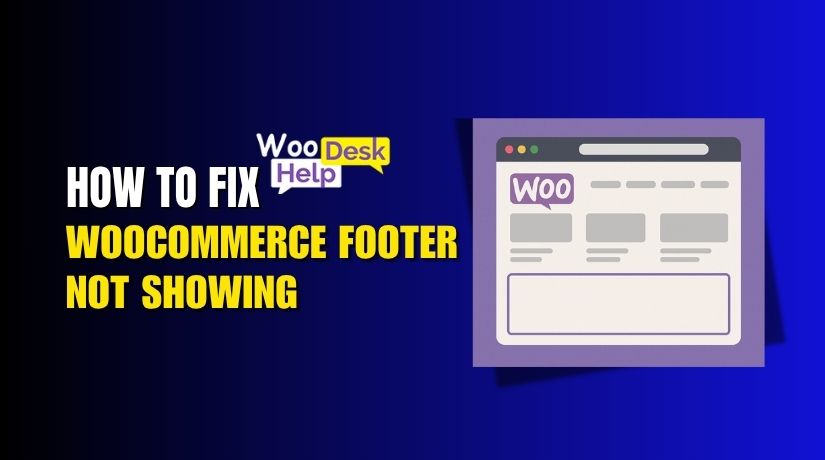
WooCommerce Out of Stock Message Not Displaying? Here’s How to Fix It
Table of Contents
- Introduction
- Why Out of Stock Visibility Matters
- Common Scenarios Where Out of Stock Message Is Missing
- Possible Causes of Missing Out of Stock Message
- Page-Specific Problems Where the Issue Appears
- Supplementary Touchpoints Often Overlooked
- Step-by-Step Troubleshooting & Fixes
- Recommended Plugins to Fix Visibility Issues
- Preventing the Issue in the Future
- Conclusion
Introduction
Running an online store with WooCommerce is usually simple and smooth. It offers great tools to manage your products and stock. But many store owners face a frustrating issue. The out of stock message doesn’t show up properly on some parts of the site. Customers may see a product and assume it’s available, only to get errors at checkout. This leads to confusion, abandoned carts, and even lost trust.
This problem affects both small and large stores. If your store has many products or variations, the issue can go unnoticed for weeks. Customers may keep clicking on products that are no longer available. This hurts your conversion rate and user experience.
You may also face support requests asking, “Why can’t I add this to cart?” In most cases, it’s because the WooCommerce out of stock message is not appearing. And it happens more often than you think.
Why Out of Stock Visibility Matters
Clear stock visibility is not just a feature—it’s a must-have. Online shoppers need to know if a product is in stock before taking action. If the out-of-stock label is missing, it causes multiple problems.
Here’s why it matters:
- Customers may waste time trying to buy unavailable items
- It creates confusion and reduces trust in your store
- Frustrated users may leave and not return
- It increases unnecessary support tickets and refund requests
For store owners, this can lead to:
- Lower customer satisfaction
- Reduced sales and repeat orders
- Negative reviews on trust platforms
Let’s say a user sees a product on sale and adds it to their wishlist. But when they return later, they find it’s out of stock with no message. They get frustrated and leave your site. These small things can make or break user loyalty.
This makes it clear—visibility of the out of stock label must be reliable. If your WooCommerce site hides these messages, fixing it becomes a priority.
Common Scenarios Where Out of Stock Message Is Missing
The “Out of Stock” message is often expected on product pages. But in WooCommerce, this message may be missing in many other key areas. If your store has multiple display sections, the missing message can confuse your users.
Let’s look at the most common areas where this issue appears:
- Shop Page
This is the main page that lists all products. If the out-of-stock label is not visible here, users may assume everything is in stock. They will click on items and waste time. Many themes hide this label to keep the design clean. But doing so can reduce clarity and trust.
- Product Catalog (Grid or List View)
Catalog views are often used on category and collection pages. These pages show product images, titles, and prices. But the stock label is often missing. If users can’t see availability, they may click on products already sold out. That creates frustration and increases bounce rate.
- Search Results Page
When users search for products, they expect clear results. But in many themes, the out-of-stock label does not appear in search results. This leads users to click on unavailable items. If this happens often, users may stop using your store search.
- Product Variation Dropdown
Products with size, color, or other options use dropdowns. Some dropdowns show all variations even if one is out of stock. The missing stock message can lead to selection errors. Customers may try to select an unavailable option, leading to checkout issues.
- Cart Page
Users often return to the cart after hours or days. If an item becomes unavailable, it should show a stock status message. But in many cases, it doesn’t. This causes confusion during the checkout process. The cart just throws an error without warning.
- Checkout Page
The checkout page is where users confirm their purchase. If an item in the cart is out of stock and no message is shown, it results in failed orders. Customers get annoyed when their payment fails due to stock issues they weren’t warned about.
- Mini Cart or Side Cart Drawer
Many modern themes use a floating mini cart or drawer. These side carts often don’t show real-time stock messages. If an item becomes unavailable, users don’t see it here. That leads to checkout failure and abandoned carts.
- Wishlist Page
If your store allows wishlisting, users expect updates. If a saved item is now out of stock, it should say so. But many plugins don’t show the out-of-stock badge on the wishlist page. Users might plan to buy an item that is no longer available.
- Compare Products Page
Product comparison tools help buyers make informed choices. But if an out-of-stock label is missing here, users can’t compare availability. They may end up selecting a product that can’t be bought. This leads to wasted time and poor buying decisions.
These scenarios are common across most WooCommerce stores. Missing labels in these areas make your store feel unreliable. Customers expect instant, clear info about stock. If your store doesn’t provide that, they’ll look elsewhere.
Make sure your site shows stock status in every customer touchpoint.
Possible Causes of Missing Out of Stock Message
Many WooCommerce users ask, “Why is the out-of-stock label missing?” The answer often depends on how your store is built. Several common issues can stop the stock status from showing.
Let’s look at the main reasons this happens:
- Theme Compatibility Issues
Not all themes support stock labels by default. Some custom themes remove or hide this information. Developers may choose to focus on design, not functionality. If your theme doesn’t include the correct stock functions, the message won’t appear.
- Custom Template Overrides
WooCommerce allows themes to override its default templates. If your theme has a custom product template, it may miss the wc_get_stock_html() function. This function displays the stock message. If it’s missing or disabled, the message will not show.
- Missing Hooks in Product Code
WooCommerce uses special hooks to show messages and alerts. Some examples include:
- woocommerce_get_availability
- woocommerce_before_shop_loop_item
- woocommerce_after_shop_loop_item_title
If these hooks are missing or altered, the stock label disappears.
- Caching and CDN Issues
Caching plugins can delay updates to your site. CDNs like Cloudflare may also serve old versions of product pages. This causes a mismatch in real-time stock info. Customers might see “in stock” when it’s actually out of stock.
- Incorrect Inventory Settings
Sometimes the product settings themselves are wrong. If inventory management is disabled for a product, it won’t show the stock status. Also, if you forget to set stock quantity to zero, the system may still show it as in stock.
- AJAX and JavaScript Conflicts
Some store features use AJAX to load content without reloading the page. But AJAX updates can skip stock status in variation dropdowns or mini carts. If your theme uses AJAX but skips availability checks, labels won’t show.
- Plugin Conflicts
Other plugins can cause stock messages to disappear. Page builders, optimization tools, or custom cart plugins may interfere. When two plugins change the same WooCommerce template, one can override the other.
Page-Specific Problems Where the Issue Appears
The out-of-stock message may work fine on some pages. But in many WooCommerce stores, it disappears in specific parts of the user flow. These aren’t always errors. Often, themes or plugins change how WooCommerce behaves.
Let’s look at key pages where this issue often appears and causes confusion:
Cart Page
Customers often return to their cart after a few hours or days. If a product goes out of stock in that time, it should say so. But many carts don’t update this information automatically. The customer clicks “checkout” and gets an error instead.
Why it happens:
- Cart page may rely on cached data
- AJAX cart scripts may not fetch stock status
- Missing out-of-stock badge in cart templates
Checkout Page
The checkout page should confirm that everything is ready to order. But when stock changes in real time, items may become unavailable. If WooCommerce doesn’t show a clear message here, it leads to failed orders.
Common problems include:
- No visual warning for out-of-stock items
- Only the error message appears after clicking “place order”
- Stock status was not rechecked before payment
This creates frustration and damages customer trust.
Mini Cart / Side Cart Drawer
Many themes use a floating cart or a side cart drawer. These elements often load with AJAX. But they don’t always update when stock changes.
You might notice:
- Sold-out items still show as “in stock”
- No stock status shown at all
- Checkout fails without explanation
These issues are common in stores using modern UX design.
Wishlist Page
Users add items to their wishlist to buy them later. But by then, products may be sold out. If the wishlist page doesn’t show this, users feel misled.
What causes it:
- Wishlist plugins don’t check stock in real time
- Themes skip the wc_get_stock_html() function
- AJAX-based wishlists ignore product availability
Make sure your wishlist displays the current stock status.
Compare Products Page
Comparison tools let customers review products side by side. But these tools often skip the stock message. A customer may prefer a product that’s out of stock—without even knowing.
Here’s what usually goes wrong:
- Stock label is missing from product cards
- Compare plugin templates don’t support availability
- Theme styling hides the badge
This leads to a poor buying decision and possible cart frustration.
Supplementary Touchpoints Often Overlooked
These are less obvious places where the “Out of Stock” message often goes missing. Many WooCommerce stores use custom features or third-party plugins. These tools may skip stock status completely. This creates confusion for users.
Let’s explore the most common overlooked areas:
- Quick View / Product Popups
Quick View allows users to check product details without leaving the page. It’s fast and convenient. But many Quick View plugins don’t show the out-of-stock label. Users see the product, click “Add to Cart,” and face an error.
Why it happens:
- Quick View templates skip stock hooks
- AJAX content doesn’t refresh stock status
- Theme styling hides the badge
This hurts the user experience and leads to cart issues.
- Related Products / Up-Sells / Cross-Sells
These sections appear on product and cart pages. They suggest items to increase order value. But if out-of-stock badges are missing, customers may try to buy unavailable items.
Typical issues:
- Product suggestions show outdated info
- No badge or label on related items
- Product looks available but is not
Always ensure related sections show the latest stock info.
- Filtered or Layered Navigation Results
Customers often filter products by size, brand, or category. These filtered views often look like category pages. But the stock status may not display on them.
Common problems:
- Product thumbnails miss the sold-out badge
- Filters still show out-of-stock variations
- AJAX filters ignore live inventory updates
This misleads shoppers who rely on filters to save time.
- Recently Viewed Products Section
Some stores show items the user browsed earlier. But these widgets don’t always reflect current stock. A product may now be out of stock but still appear active.
Make sure these areas show the out-of-stock label clearly.
- Emails (Wishlist Reminders / Abandoned Cart)
Emails that link to unavailable products create a poor experience. If the message is not updated, users feel misled.
To fix:
- Use dynamic email content
- Sync with real-time stock status
- Label out-of-stock items in the email body
These touchpoints are often forgotten during testing. But they have a huge impact on user trust. Always check these areas when fixing out-of-stock visibility.
Step-by-Step Troubleshooting & Fixes
Fixing the missing WooCommerce out of stock message requires a step-by-step approach. It’s often caused by theme issues, plugin conflicts, or custom code. Let’s go through simple methods to find and fix the problem.
Step 1: Check Inventory Settings in WooCommerce
Start with the basics. Go to WooCommerce → Settings → Products → Inventory. Make sure your inventory management is enabled.
Also, confirm these settings:
- “Manage stock” is checked for all products
- Out-of-stock items are not hidden
- Stock quantity is set correctly (zero means out of stock)
If the settings are wrong, WooCommerce won’t show the label.
Step 2: Switch to the Default Theme Temporarily
Your active theme may override stock display functions. To test this, switch to a default WooCommerce-supported theme like Storefront or Twenty Twenty-Four.
Steps:
- Go to Appearance → Themes
- Activate a default theme
- Visit your product and shop pages
If the stock message appears, your main theme is the issue.
Step 3: Deactivate Plugins One by One
Plugins can conflict with WooCommerce core functions. Some cache or cart plugins block real-time stock updates. To test:
- Deactivate all plugins except WooCommerce
- Check if the out-of-stock label appears
- Reactivate plugins one at a time
- After each activation, refresh and check again
This will help you find the conflicting plugin.
Step 4: Inspect Custom Template Overrides
Many themes customize WooCommerce templates. These custom files may remove the function that shows the stock message. Check if your theme has files like:
- content-product.php
- single-product.php
- loop/add-to-cart.php
Look for the function:
<?php echo wc_get_stock_html( $product ); ?>
If this code is missing, stock messages won’t display.
Step 5: Fix Variation Dropdown Display
Out-of-stock variation options should either be greyed out or hidden. But some themes show them as selectable. This creates confusion.
To fix:
- Use the “Disable out-of-stock variations” setting in WooCommerce
- Check for custom variation swatches plugins
- Test with default WooCommerce variation dropdowns
Make sure unavailable options don’t stay active.
Step 6: Clear Cache and Disable CDN Temporarily
Caching systems store old versions of your pages. This includes plugins like:
- WP Super Cache
- W3 Total Cache
- SiteGround Optimizer
CDNs like Cloudflare can also delay updates. To test properly:
- Clear all caches (plugin, server, and browser)
- Temporarily pause your CDN
- Refresh your shop and cart pages
If stock messages appear after clearing, cache was the problem.
Step 7: Use a Code Snippet to Force Stock Message
If your theme doesn’t support it, add a custom snippet. This will force WooCommerce to show the “Sold Out” message.
Add this to your functions.php file:
add_filter(‘woocommerce_get_availability’, ‘custom_stock_message’, 10, 2);
function custom_stock_message($availability, $product) {
if (!$product->is_in_stock()) {
$availability[‘availability’] = __(‘Sold Out’, ‘woocommerce’);
}
return $availability;
}
This adds a visible “Sold Out” label to all out-of-stock products.
Bonus: Test in a Staging Environment
Never test directly on your live store. Use a staging site to:
- Switch themes safely
- Test plugin conflicts
- Add code without breaking the site
Most hosting companies offer one-click staging environments.
Recommended Plugins to Fix Visibility Issues
If you’re not comfortable editing code, plugins can help. Several tools are built specifically to manage WooCommerce stock status. These plugins make it easier to control how stock labels appear.
Here are some trusted options:
- WooCommerce Custom Stock Status
Lets you show custom labels like “Coming Soon” or “Low Stock”. - Booster for WooCommerce
Offers control over how out-of-stock products display site-wide. - WooCommerce Stock Manager
Helps you edit stock levels and labels from one dashboard.
These tools save time and reduce errors for store owners.
Preventing the Issue in the Future
Once fixed, make sure the issue doesn’t come back. You can avoid problems by following a few simple rules.
Tips to keep things running smoothly:
- Always use themes that fully support WooCommerce
- Avoid removing or editing core WooCommerce template files
- Test stock behavior when installing a new plugin
- Keep WooCommerce, plugins, and your theme updated
- Use a staging site before making big changes
Good habits now will save you trouble later.
Conclusion
A missing out-of-stock message may seem like a small issue. But it has a big impact on how users interact with your store. If shoppers can’t see stock status clearly, they often feel confused or misled. This can lead to cart abandonment and lower trust in your brand.
Fixing this problem is not just about design—it’s about creating a better shopping experience. From your shop page to the mini cart and even in emails, stock status should be visible and accurate.
You don’t need to be a developer to solve this. With the right steps and tools, most issues can be fixed quickly. Use trusted plugins, test your theme, and make sure caching is not hiding important updates.
At WooHelpDesk, we help WooCommerce store owners solve these problems every day. Whether you need stock visibility fixes or full theme audits, our experts are here for you.
Need help fixing your WooCommerce or WordPress store?
📞 Call us now at +1 888 602 0119 (US & Canada) for fast, friendly support.
We offer:
- Expert fixes for WooCommerce display issues
- Theme and plugin compatibility checks
- Personalized support for your unique store setup
Don’t let small issues hurt your customer experience. Let us help you keep your store running smoothly and professionally.




